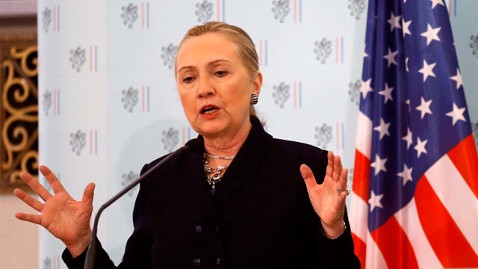NASA is so delighted with Curiosity's Mars mission that the agency wants to do it all again in 2020, with the possibility of identifying and storing some rocks for a future sample return to Earth.
The formal announcement, made at the American Geophysical Union's annual fall meeting, represents a triumph for the NASA Mars program, which had fallen on hard times due to steep budget cuts. But NASA associate administrator for science John Grunsfeld said that the agency has the funds to build and operate a second Curiosity-style rover, largely because it has a lot of spare parts and an engineering and science team that knows how to develop a follow-on expedition.
"The new science rover builds off the tremendous success from Curiosity and will have new instruments," Grunsfeld said. Curiosity II is projected to cost $1.5 billion—compared with the $2.5 billion price tag for the rover now on Mars—and will require congressional approval.
While the 2020 rover will have the same one-ton chassis as Curiosity—and could use the same sky crane technology involved in the "seven minutes of terror"—it will have different instruments and, many hope, the capacity to cache a Mars rock for later pickup and delivery to researchers on Earth. Curiosity and the other Mars rovers, satellites, and probes have garnered substantial knowledge about the Red Planet in recent decades, but planetary scientists say no Mars-based investigations can be nearly as instructive as studying a sample in person here on Earth.
(Video: Mars Rover's "Seven Minutes of Terror.")
Return to Sender
That's why "sample return" has topped several comprehensive reviews of what NASA should focus on for the next decade regarding Mars.
"There is absolutely no doubt that this rover has the capability to collect and cache a suite of magnificent samples," said astronomer Steven Squyres, with Cornell University in New York, who led a "decadal survey" of what scientists want to see happen in the field of planetary science in the years ahead. "We have a proven system now for landing a substantial payload on Mars, and that's what we need to enable sample return."
The decision about whether the second rover will be able to collect and "cache" a sample will be up to a "science definition team" that will meet in the years ahead to weigh the pros and cons of focusing the rover's activity on that task.
As currently imagined, bringing a rock sample back to Earth would require three missions: one to select, pick up, and store the sample; a second to pick it up and fly it into a Mars orbit; and a third to take it from Mars back to Earth.
"A sample return would rely on all the Mars missions before it," said Scott Hubbard, formerly NASA's "Mars Czar," who is now at Stanford University. "Finding the right rocks from the right areas, and then being able to get there, involves science and technology we've learned over the decades."
Renewed Interest
Clearly, Curiosity's success has changed the thinking about Mars exploration, said Hubbard. He was a vocal critic of the Obama Administration's decision earlier this year to cut back on the Mars program as part of agency belt-tightening but now is "delighted" by this renewed initiative.
(Explore an interactive time line of Mars exploration in National Geographic magazine.)
More than 50 million people watched NASA coverage of Curiosity's landing and cheered the rover's success, Hubbard said. If things had turned out differently with Curiosity, "we'd be having a very different conversation about the Mars program now."
(See "Curiosity Landing on Mars Greeted With Whoops and Tears of Jubilation.")
If Congress gives the green light, the 2020 rover would be the only $1 billion-plus "flagship" mission—NASA's largest and most expensive class of projects—in the agency's planetary division in the next decade. There are many other less ambitious projects to other planets, asteroids, moons, and comets in the works, but none are flagships. That has left some planetary scientists not involved with Mars unhappy with NASA's heavy Martian focus.
Future Plans
While the announcement of the 2020 rover mission set the Mars community abuzz, NASA also outlined a series of smaller missions that will precede it. The MAVEN spacecraft, set to launch next year, will study the Martian atmosphere in unprecedented detail; a lander planned for 2018 will study the Red Planet's crust and interior; and NASA will renew its promise to participate in a European life-detection mission in 2018. NASA had signed an agreement in 2009 to partner with the European Space Agency on that mission but had to back out earlier this year because of budget constraints.
NASA said that a request for proposals would go out soon, soliciting ideas about science instruments that might be on the rover. And as for a sample return system, at this stage all that's required is the ability to identify good samples, collect them, and then store them inside the rover.
"They can wait there on Mars for some time as we figure out how to pick them up," Squyres said. "After all, they're rocks."










